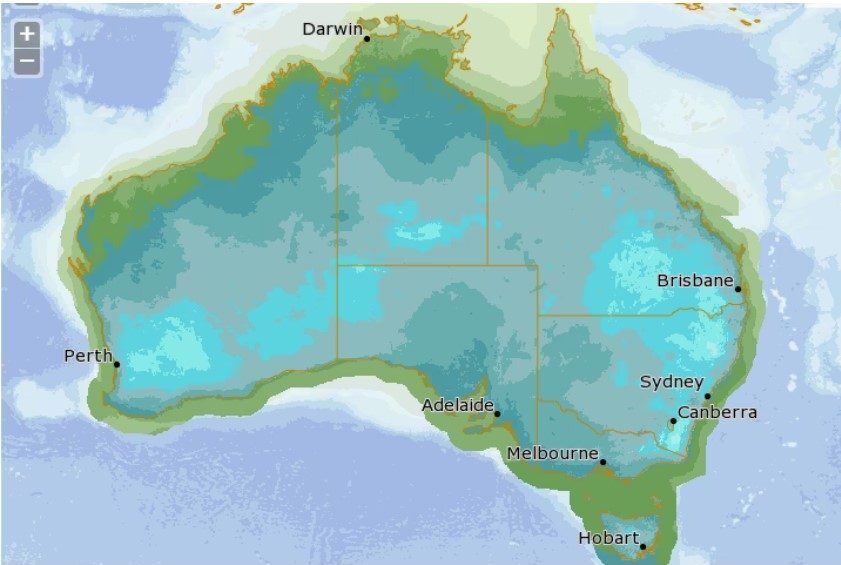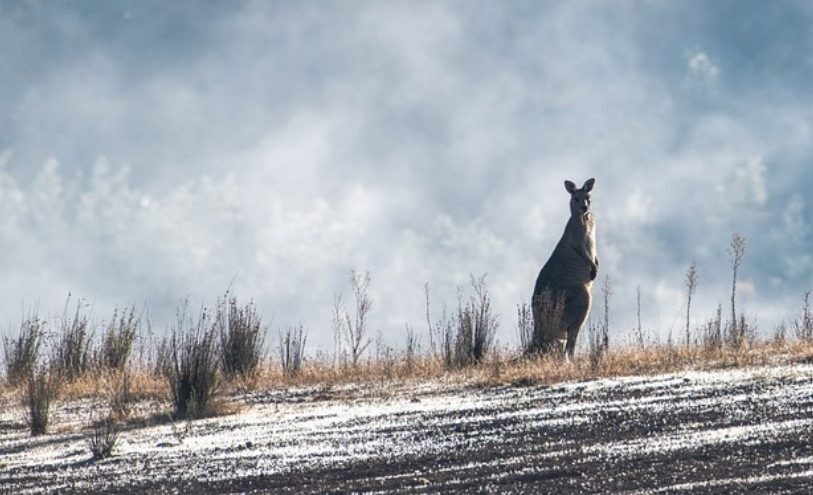The IPCC experts were sure would be less frosts in Australia, but buried in a government funded ABC weather report was the virtually unknown admission that the frost season is actually growing across southern Australia, not shrinking. And in some places by an astonishing 40 extra days a year. What's more, the researchers have known about this long term trend for years but didn't think to mention it, and the ABC didn't have a problem with that either. (It's not like farmers need to know these things?)
When asked for an explanation for the increase in frosts, the ANU climate expert said "I think this is one of those climate surprises," as if the IPCC unexpectedly won a game of Bingo, instead of getting a core weather trend 100% wrong.
We note the ABC feigned journalism to cover up for the Bureau of Meteorology and IPCC failures. Where were the headlines: "Climate Change causes more frosts, not less", or "IPCC models dangerously misleading on frosts?" Did any Australian farmers and investors buy up properties and plant the wrong crops based on the global warming misinformation repeated or tacitly endorsed by the ABC, BoM and CSIRO?
Frost damage costs Australian farmers around $400 million each year. (Perhaps if we sold the ABC we could cover that).
Frost expected across nearly every state and territory in Australia this weekendAnd he has known for years:
By Tyne Logan, ABC Australia
Buried under 450 words of weather, trite caveats, and preamble the ABC journalist finally gets to a new virtually unknown climate trend that affects farmers, investors, researchers, and rural Australia:
The latest Intergovernmental Panel on Climate Change report projected, with high confidence, that frost events would decrease, in general, across southern Australia in the future with climate change.
ANU climate applications scientist Steven Crimp said some parts of New South Wales were now experiencing five more frost events on average each year, compared to 1960.
He said this was based on local weather station data between 1960 and 2018, but the trend was unlikely to have changed much in the past five years.Scientifically they are not caught unaware because climate models are useless politicized fantasies, it's because there is more "climate-nuance" around now:
"I think this is one of those climate surprises," he said.
"Despite the sort of overall warming trend in our temperatures, the extremes of our temperatures, be they hot or cold, are acting in a slightly more nuanced and complex way, which can be quite surprising at times," he said.

Dr Crimp said they had also found the frost season was lengthening across southern Australia.The frosts are due to the dry conditions, says Dr Crimp, putting in an admirable effort at scientific-word-salad to cover up for what he's not allowed to say — that they have no idea.
"So if we think about the east coast first, we see an earlier start and a later finish to that frost window," he said. "In some cases, the extension of that frost window is greater than 40 days.
"But in Western Australia in particular, we see that it's less to do with the later frost occurrence, but more earlier frost occurrence."
Why aren't frost days decreasing?But the truth is that, on average, and a priori — global warming would increase humidity and global cooling would dry the air out. And carbon dioxide is supposed to work at night time too — increasing minimum temperatures. All these factors make frosts less likely.
Dr Crimp said, ironically, the observations could be explained by the types of weather system that brought warmer, drier weather. That was high pressure systems which often produced the clear, still nights needed for frost to settle.
"As anyone knows who's outside at night in winter, you have to have those clear night skies and the atmosphere needs to be very dry," he said.
"That way the surface of the Earth loses heat very rapidly and any moisture in the air then condenses as a frost. "So because we are getting those dry conditions that are starting to emerge, that is more conducive for frosts to occur."
And yet the frosts happen.
Global warming 'science' has lost,h/t to A happy little debunker who points out we've had three wet La Nina years as well.
Being useless, at a terrible cost,
As their heat without end,
Is bucked by the trend,
Of Australia's more nights of frost.
— Ruairi




Reader Comments
At this point it is so obvious where I live that your average mollusc can figure it out.
How do you define that scrutinizer? For me an average mollusk has a soft unsegmented body and live in aquatic or damp habitats, and most kinds have an external calcareous shell. But lately, even said mollusk been hard to come by I reckon and I'll take an average one even though bigger ones above the normal curve are better - they are good eating no doubt.
I got a friend from England trying to get some runner beans going and he says most of em ain't even sprouting. Suggest to me something serious is amiss and the time is at hand.
It must be now or never scrutinizer - scrutinize all you want, but there comes a time when action is called upon.
Happy Gardening to you - and all else you got going.
I have ambitions as well to be self-sustaining as much as I can be and the place I live lends itself to that at least at the getaway place!
Ken
ps - your post has made me decide to take a picture of the fig tree we have here in Charlotte on the driveway - it has lots of figs on it already...
If that confuses you, it is your fault ...